183. Old books tell more than a story
From the archive: A three-volume voyage of dusty discovery.
In which Rebecca explores the secrets revealed by brushing dust from old volumes.

Dear Reader,
I’ve been reading a lot of books during my pending period of rest, and while I’m choosing contemporary literature from my library via the Libby app, the hardcopy books I have been enjoying all qualify for the ‘vintage’ label.
I first published 'Old books tell more than a story’ at the beginning of 2024, and given the recent rise in my reading I thought I’d shake out the dusty pages of the post again to show you as part of my Old gold 🌟 series.
Whether you’re coming across this story for the first time or you’re reading it again, I hope you enjoy it.
Either way, I appreciate having you as a reader. Thank you. ❤️
Love,
Rebecca x
Old books tell more than a story: a three-volume voyage of dusty discovery
My dawning realisation that my acquisition of second-hand books has become habitual has prompted me to take a closer look at some of the oldies already populating my dusty shelves.
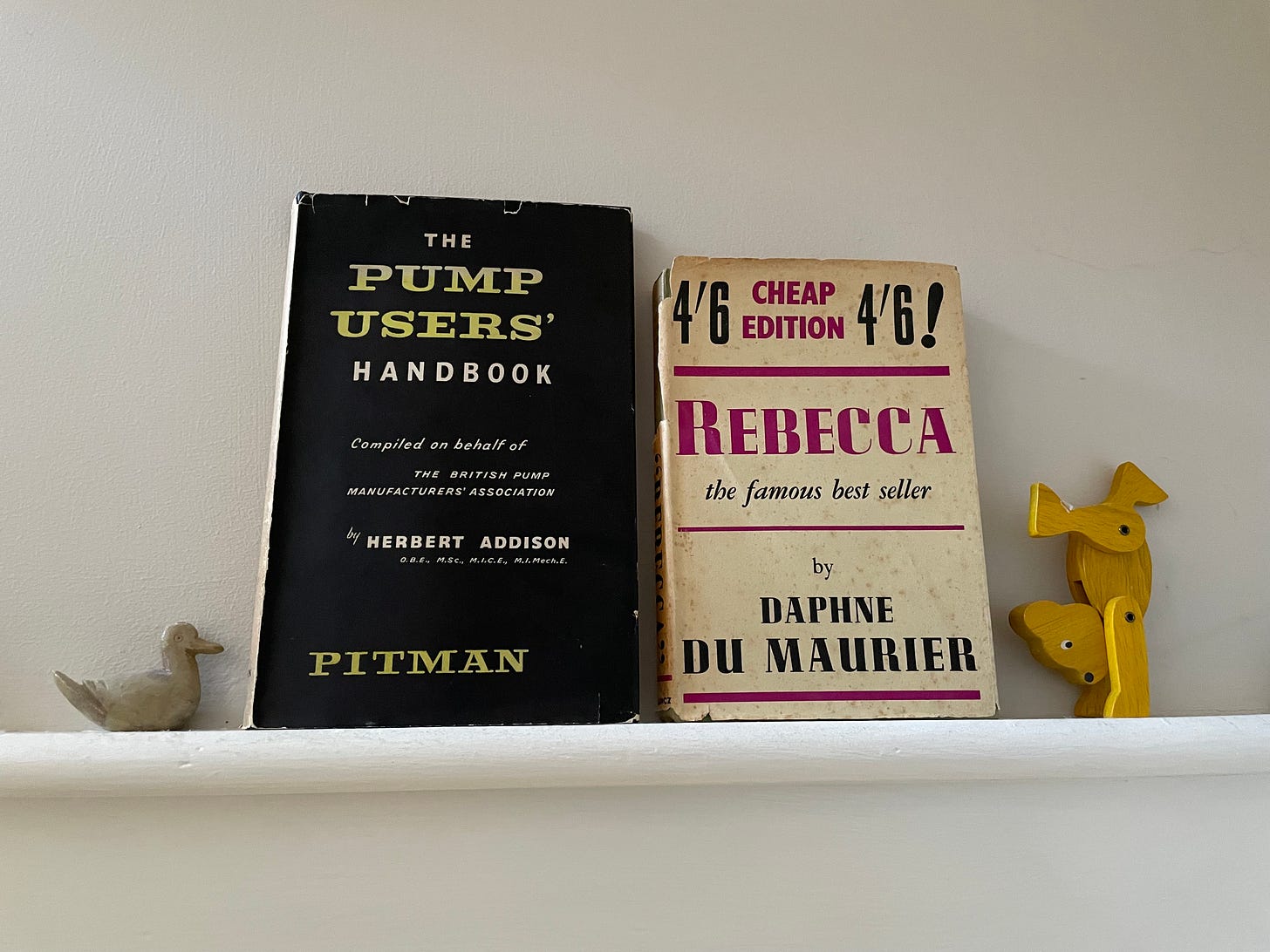
VOLUME 1
The Pump Users’ Handbook by Herbert Addison
After several years of lobbying the diabetes centre at my local hospital I was thrilled when the powers that be at last relented and granted my request for an insulin pump. Bye bye clunky insulin pens, hello treating my condition with more streamlined contemporary technology.
I’d taken a little time off work to get to grips with this new way of managing my type 1 diabetes, and on my first confidence-building trip out of the house after being connected to my new hardware I found myself in a secondhand bookshop.
This volume caught my eye:
Convinced that the universe had conspired to plant it just for me I picked it up.
‘I’m a pump user!’ I beamed. ‘It’s literally got my name on it!’
The bookseller raised her eyebrows. ‘Really?’ she asked, in that kind of voice.
Realising that mine was rather a niche kind of excitement, I felt too foolish to explain. Instead, I quietly parted with £4 and headed home with my prize.
The cover price of The Pump Users’ Handbook at the time of its publication in 1958 was a whopping 30 shillings.1 This website calculates the equivalent price in 2021 (later dates being unavailable) to be £37.28. I wondered how much it would cost to buy the book today, and turned to Google.
With the book by now almost certainly out of print it was no surprise that my search for it elicited no results, but my browse of the online shelves of Waterstones for a more contemporary book on pumps turned up this one published in 1998:
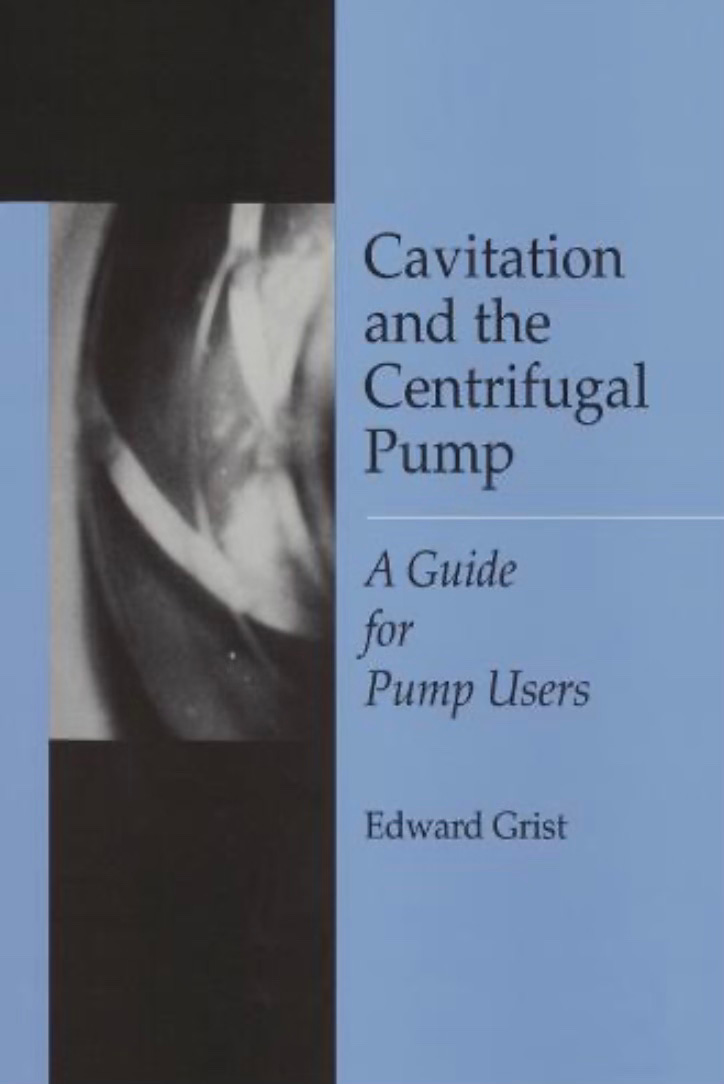
I discovered that a purchase of Cavitation and the Centrifugal Pump: A Guide for Pump Users by Edward Grist would set me back £160.
This practical reference describes the occurrence of cavitation in a centrifugal pump, and how unacceptable cavitation can be avoided. It explains cavitation problems such as hydraulic performance loss, hydrodynamically or thermodynamically induced surging, and cavitation erosion.
Would it be worth the spend? Sure, if I wanted to learn more about cavitation.
💬 Well, what is cavitation?
Reader, I’m so glad you asked! I can help you out there, because I have a book about pumps. 😉
The word itself is derived from the word cavity – an empty space or hollow. The “empty” spaces to be found in a liquid when cavitation occurs are bubbles of vapour.
Taken from The Pump Users’ Handbook by Herbert Addison, page 70.
My deliberately brief ‘research’ on cavitation complete, I closed the book. Laying it on my desk I noticed something I hadn’t spotted before: that the spine text is printed in the wrong direction.
Reader, upside-down spine text really bothers me! If you’d like to know how much, have a read of this post:
It turns out that Herbert Addison OBE2, MSc3, MICE4, MIMechE5 has not only multiple letters after his name, but more than one book title, too. In fact, if you’re interested in owning a copy of his 1956 tome A Treatise on Applied Hydraulics you can pick it up for £8 on eBay right now.
VOLUME 2
Rebecca by Daphne du Maurier
On the lookout for an original gift for Jim in order to mark our third wedding anniversary some years ago, I was delighted to spot exactly the right thing in a vintage shop in Chichester. Reader, how could I resist? 🤣
At only 4’6 (four shillings and sixpence) this 1948 hardback was certainly worthy of its ‘cheap edition’ claim, and indeed its exclamation mark. When I opened the cover to find the price the shop had marked it with – just £2 – I found this gorgeous inscription:
To my Darling Wife,
because she likes this story.
With all my love,
Frank
Singapore
November, 1948
Frank had written these tender words in fountain pen, and had smudged the full stop he’d added after the date. I wonder if he – or his nameless wife – had minded?6
With Singapore having been a British colony for over 140 years until 1963, in 1948 Frank would have paid the cover price of 4’6 in shillings and pence rather than Singapore dollars, which didn’t become the local currency until 1967. The price he paid equates to £8.70 in 2021, and today the cheapest hardback edition offered on the Waterstones website is £14.99.
The book had been printed in Bungay, Suffolk, England, but thanks to the rubber-stamped text in purple ink on an early page I can see that Frank had bought it at a bookshop more local to him.
I had a look on Google Street View for 17 High Street, Singapore, hoping to see the frontage of Ensign Book Store.
Reader, not only is the bookshop not there, number 17 is also missing. In fact, Google Street View showed me that the lowest-numbered address in High Street, Singapore, is 67. My online research revealed that part of the street had been renamed in 1999 and that the bookshop’s original address along with it.
An online search for the book store told me that from 1974 until the business closed down (no date available) it had been located at altogether different premises at 109 North Bridge Road:

I’m not sure that Frank would even recognise this place today. I like to think that his gift to his wife of Rebecca – nearly 70 years before I gave the same book to Jim – had been to mark their own anniversary.
♥️
VOLUME 3
Peyton Place by Grace Metalious
This 1960 copy of the English edition of Peyton Place – a book first published in the USA in 1957 – is the only paperback in the collection of volumes I’m exploring in this post. It was the sensationalist headline in orange and yellow on the front cover which had made it irresistible to me:
I find it interesting that although two of its words have been given initial capitals for emphasis, the otherwise shouty caption is written entirely in lower case.
And look!
The enthusiastic marketing pitch continues on the back cover!
Reader, exclamation marks abound!
Previous owner Gwyneth Pritchard – for it is her name inscribed in biro on the first page – had also been unable to resist this book. Had she already seen ‘the famous film’ mentioned in such bright colours on the front cover?7
Of the three books I’ve examined for this post this one had the cheapest cover price, presumably because of its paperback binding. 3’6 (three shillings and sixpence) equates to £4.49 today. If I wanted a contemporary paperback edition of Peyton Place – no offence, Grace Metalious, but I don’t – I could purchase one from Waterstones for £10.99.
Although I have read Rebecca I have only ever dipped in and out of The Pump Users’ Handbook. But I wonder if I’ll get further into Peyton Place than Gwyneth Pritchard, clearly a stranger to the paper bookmark, had managed? You see, the turned-down corner of page 49 tells me that that’s as far as she’d got.
Reader, I’m going to finish what Gwyneth had started, and tackle this ‘Explosive Bestseller’ for myself. I’ll let you know how I get on!
Love,
Rebecca
📚 Regular readers of ‘Dear Reader, I’m Lost' will be no strangers to my ongoing light-hearted letter-writing project with fellow Brit
of Eclecticism: Reflections on literature and life. It’s his turn to write to me on Wednesday! You can find the archive of our chortlesome correspondence here.If you’ve enjoyed this post, please let me know by clicking the heart. Thank you!
Thank you for reading! If you enjoy ‘Dear Reader, I’m lost’, please share and subscribe for free.
Before decimalisation of the currency in February 1971, the British pound sterling was subdivided into 20 shillings, with each shilling made up of 12 (old) pence, a total of 240 pence. With decimalisation, the pound kept its old value and name, but the shilling was abolished, and the penny was revalued, such that the pound was subdivided into 100 of what were originally called "new pence", and later just pence ("p") when confusion was no longer likely.
OBE: Order of the British Empire.
MSc: Master of Science.
MICE: Member of the Institution of Civil Engineers.
MIMechE: Member of the Institution of Mechanical Engineers.
For the record, I would have minded. Reader, I’m like that… 🙄
Peyton Place is a 1957 American drama film starring Lana Turner, Hope Lange, Lee Philips, Lloyd Nolan, Diane Varsi, Arthur Kennedy, Russ Tamblyn, and Terry Moore. Directed by Mark Robson, it follows the residents of a small fictional New England mill town in the years surrounding World War II, where scandal, homicide, suicide, incest, and moral hypocrisy belie its tranquil façade. It is based on Grace Metalious’s bestselling 1956 novel of the same name.
Taken from Wikipedia.






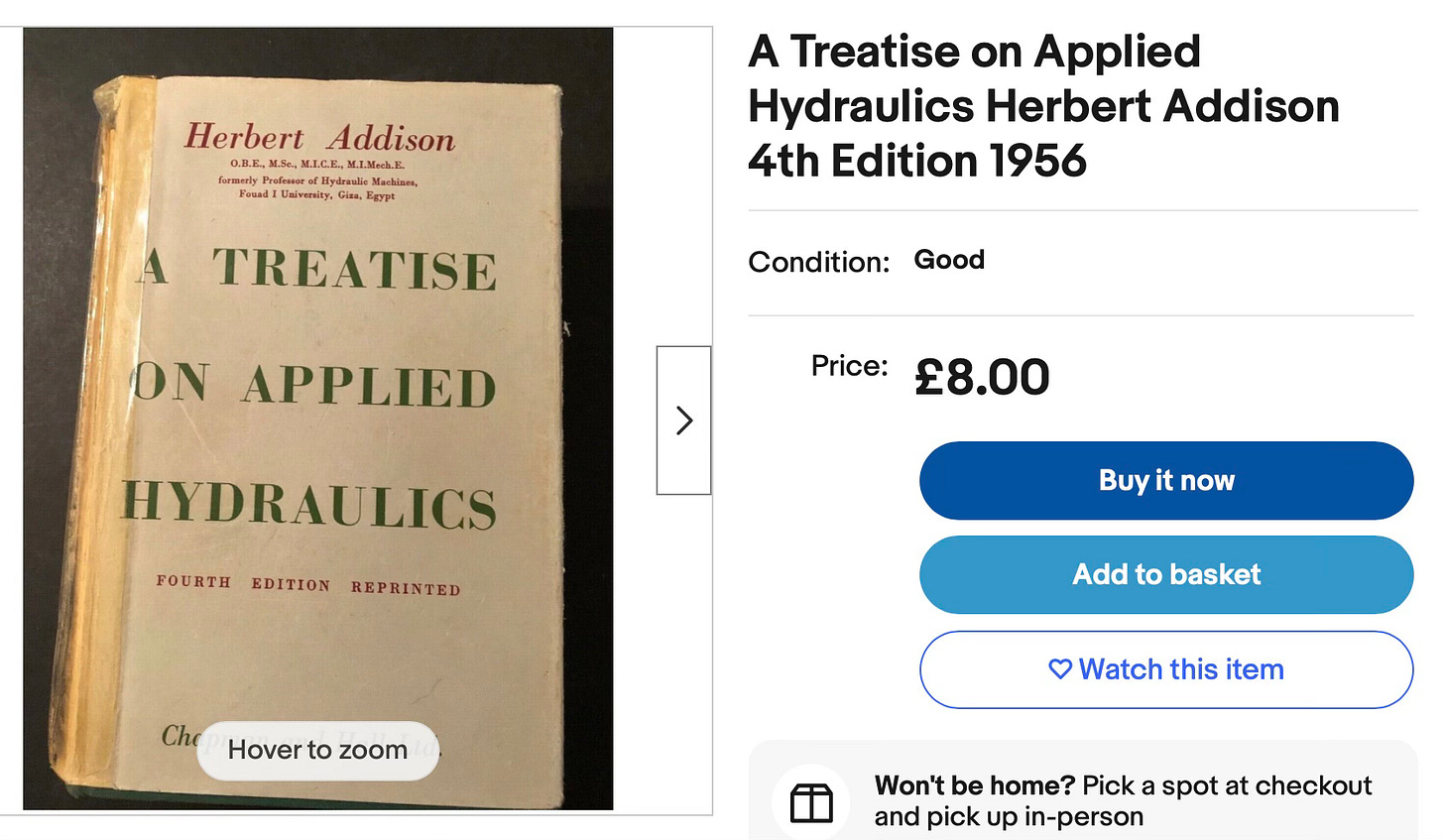


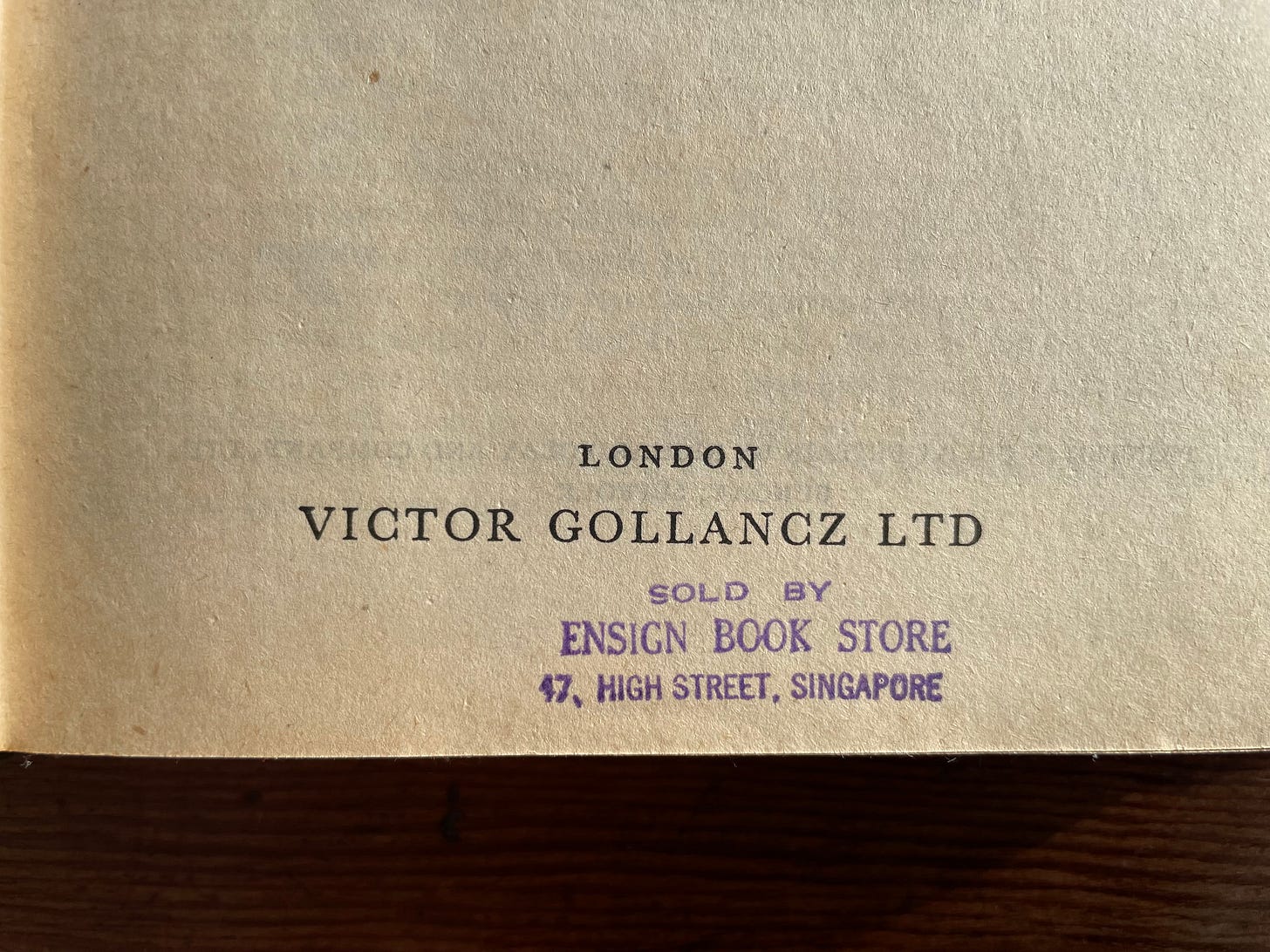



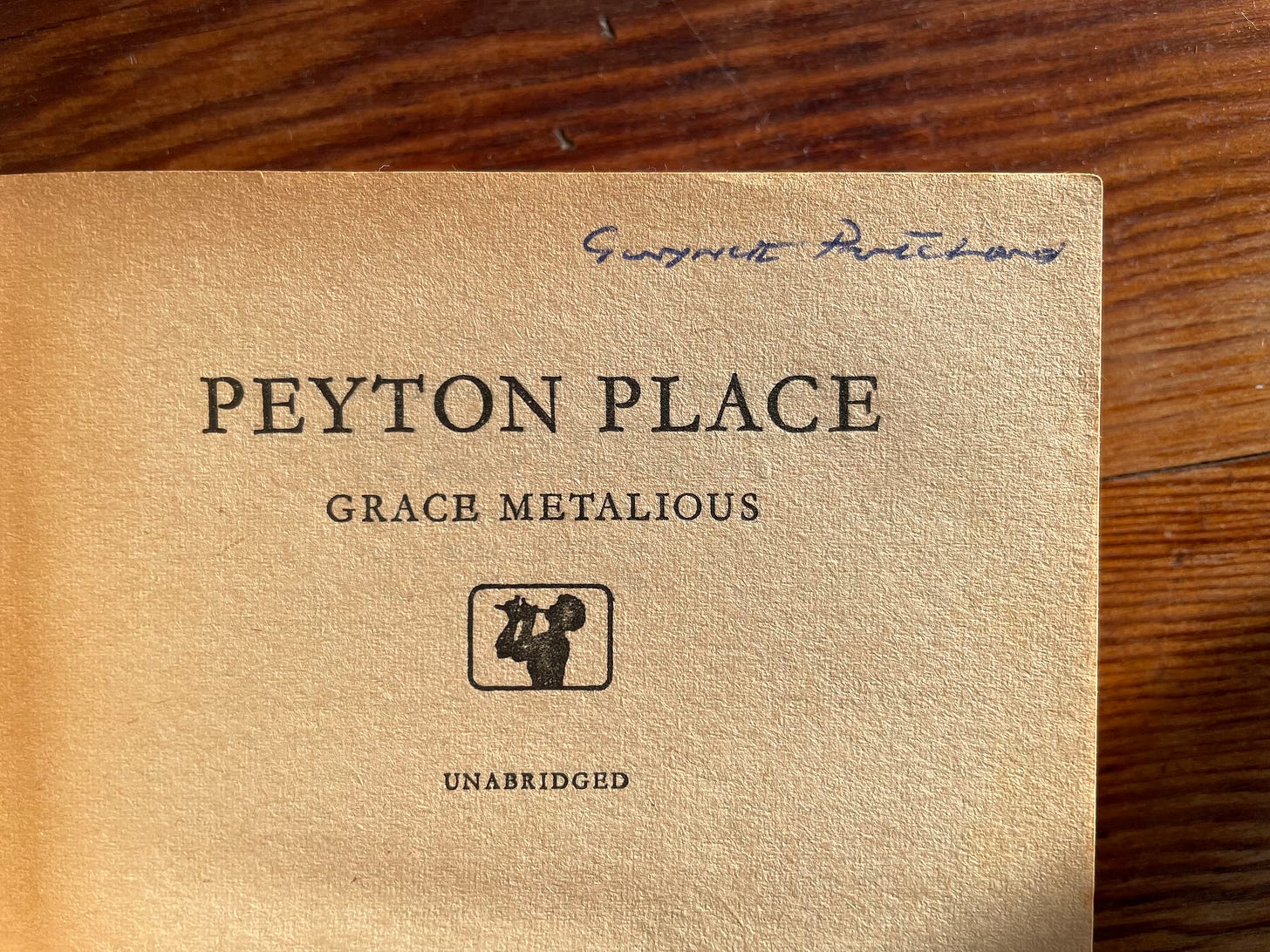
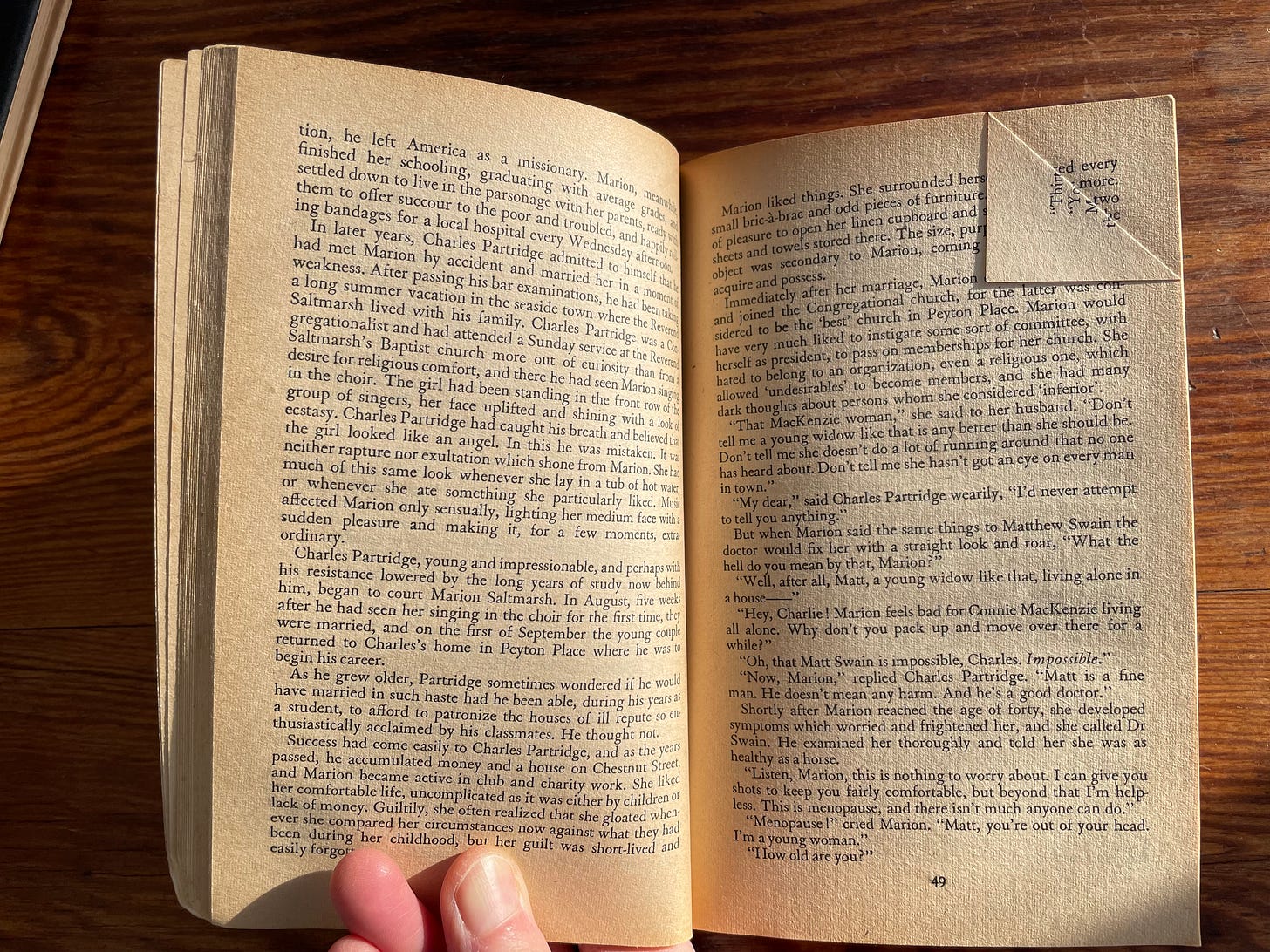
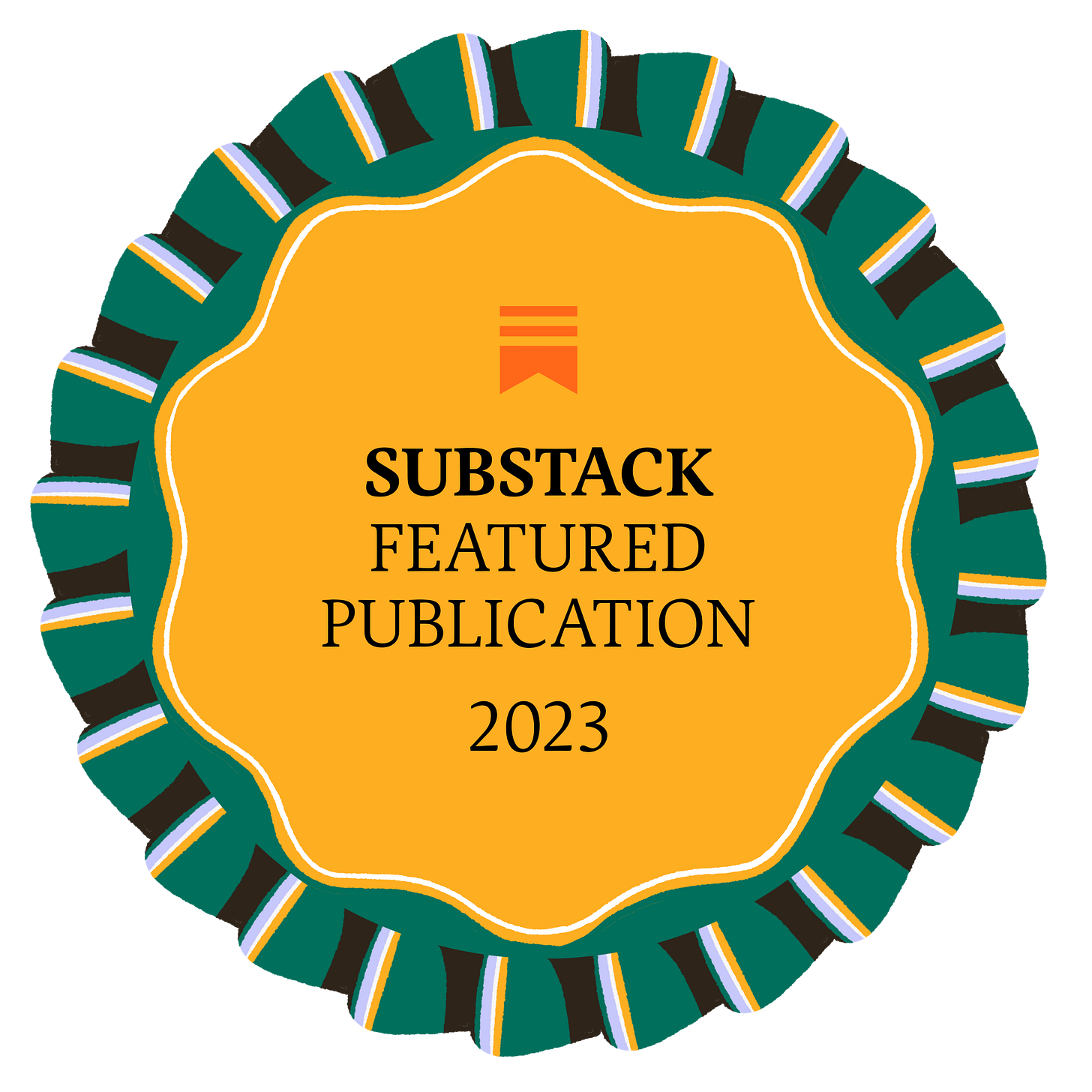
Oh I enjoyed this...I was sorting out old books yesterday for the Oxfam shop, and came across some of the newspaper cuttings my elderly Dad would send me twenty years and more ago. I was up to my ears and beyond with work, teenagers and the menopause (not to mention elderly, frail parents) and he would politely and unfailingly inscribe each lovingly sent article (usually an obituary) 'You may perhaps have missed this...' 😊
This essay made me think of a writing prompt you can offer your readers. There’s a story behind each one of these old book inscriptions. Ie: What was Frank’s story?